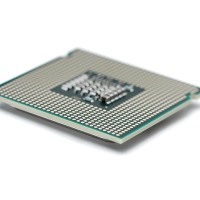 ‘Pharmacy on a chip’ devise is used for the treatment of osteoporosis. However, there are many other applications where this type of microchip approach could improve treatment for patients, such as multiple sclerosis, vaccine delivery, cancer treatment and pain management. The whole device is approximately 3cm by 5cm, and 1cm thick, explained co-author Dr Robert Farra.
‘Pharmacy on a chip’ devise is used for the treatment of osteoporosis. However, there are many other applications where this type of microchip approach could improve treatment for patients, such as multiple sclerosis, vaccine delivery, cancer treatment and pain management. The whole device is approximately 3cm by 5cm, and 1cm thick, explained co-author Dr Robert Farra.
Like other medical implants, it’s made out of biocompatible materials. It has housing with the electronics on the inside, together with the microchips that contain the discrete doses of the hormone.
The chip controls the timing, and because it is programmable, the dosages can be scheduled in advance or – as in the newly reported study – triggered remotely by a radio signal.
The innovation has been discussed here at the annual meeting of the American Association for the Advancement of Science (AAAS).
One of the designers, Prof Robert Langer from the Massachusetts Institute of Technology (MIT), claimed the programmable nature of the device opened up fascinating new avenues for medicine.
It sees the fingernail-sized chip connected to an array of tiny, individually sealed wells of a drug product – in this case, a parathyroid hormone, teriparatide, which is used to counter bone density loss. Fully packaged, the device is about the size of a heart pacemaker.
When the microprocessor decides to pass current through a particular membrane that membrane decomposes in about 25 microseconds
The device was tested on seven women between ages of 65 and 70 from Denmark. In their paper, the scientists report that the implant delivered the drug teriparatide just as effectively as the injections pens that often used to administer such treatment, and that there were indications of improved bone formation. Critically, no side effects were noticed.
The innovation started out as a research project in MIT but is now being developed by a spin-off company, Microchips Inc.
The firm is trying to scale up the system so that more doses can be included. In the trial, only 20 wells were present. Microchips Inc believes drug delivery devices containing hundreds of wells are possible.
However, the team acknowledges that a marketable product is still at least five years away.
‘Clinical promise’
Commenting on the research, John Watson, a professor of bioengineering at the University of California, San Diego, listed areas where improvements would be needed.
In the study, the device failed in one patient (an 8th patient, not included in their analysis), and the manufacturing process yielded only one device with all 20 reservoirs of drug. .
Automated drug delivery systems are likely to prove popular with patients who currently have a daily regimen of self-administered injections.
The downside with parathyroid hormone has always been that women have to inject themselves on a daily basis so a new implant, like this, would certainly address compliance issues.

Нельзя не отметить, насколько важно в современных реалиях иметь надёжный доступ к азартным играм. На https://vodka-registration.site всё сделано с расчётом на стабильность: зеркало подключается автоматически, приложение не требует сложной авторизации, а поддержка реагирует моментально. Это особенно важно, когда речь идёт о деньгах и персональных данных. Здесь ты действительно чувствуешь безопасность. Все транзакции шифруются, выводы контролируются вручную, и это не раздражает, а наоборот — внушает доверие. Игровой процесс при этом не страдает: ты получаешь максимум эмоций, независимо от того, играешь ли в слоты, карточные или рулетку. Бонусная программа гибкая: можно выбрать, что тебе важнее — кэшбэк, фриспины или прямой бонус на депозит. Это создаёт ощущение персонального подхода. Сложно найти второе место, где столько внимания уделено деталям. Всё работает и приносит удовольствие.